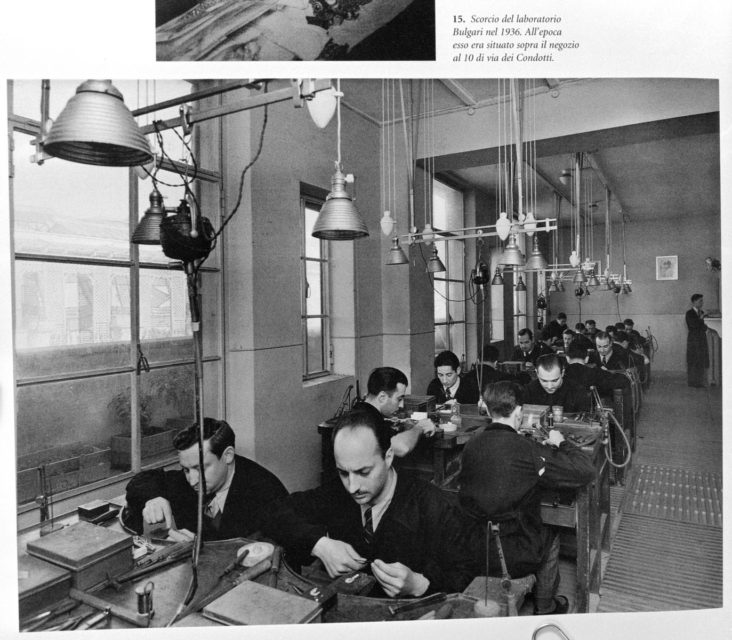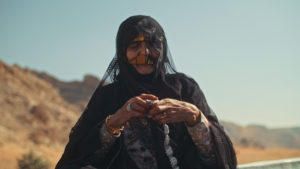Experts At Irthi–Bvlgari Discussion Assert Artisanal & Heritage Products Still Very Much A Part Of The New Global Reality

In light of sudden new realities facing both artisans and big fashion houses worldwide, Irthi Contemporary Crafts Council, a Sharjah-based entity engaged in the revival and modernisation of the traditional crafts of the UAE, recently convened an expert panel which has asserted that artisanship will continue to generate interest, find patrons and be valued as long as the design community is agile in rethinking strategy and adapting to change.
Held by Irthi, an affiliate of the NAMA Women Advancement Establishment (NAMA) in collaboration with the Italian jewellery brand Bvlgari, the discussions revealed that even as the world grows apart physically, collaboration will be the key to keep the creative dialogue going, and that evolution of the crafts through a fresh technological impetus is what will ensure their survival in the new global reality.
Titled ‘Resilient crafts and design houses adapting to a new global reality’, the virtual dialogue was led by Reem BinKaram, Director of NAMA Women Advancement Establishment; Manal Ataya, Director General of the Sharjah Museums Authority; Sheikh Salem Faisal Al Qasimi, Founder and Creative Director of the award-winning Fikra Design Studio; Lucia Boscaini, Brand and Heritage Curator, Bvlgari; and Giampaolo Della Croce, High Jewellery Senior Director, Bvlgari. It was moderated by Farah Nasri, Assistant Manager of Curation & Design at Irthi Contemporary Crafts Council.
Artisanal resilience is shaping a new future for crafts and design
The discussion took off with BinKaram outlining how the changing global economy affected artisans, their work and cultural heritage itself and how collaborations could be the answer to the vexing questions on their future. She said: “Now is the time we need to look more into the state of artisan communities, enable collaborations and dialogue between them and international partners to ensure they are supported socioeconomically and empowered to continue their work of promoting and preserving our crafts heritage.”
Talking about how the women artisans at Irthi were coping with the situation, Reem BinKaram said: “It is beautiful to see how these women have created their own dialogue today. I think if we were worried about how they will cope in the post-COVID-19 situation, their attitude shows that we were wrong. These women are proving they are resilient, just like culture is too. They will survive this new global reality as did their predecessors around the world, through the wars they witnessed or the earthquakes and other natural calamities they survived, or political issues they weathered. Today as the entire world is facing a pandemic, it is inspiring to see the enthusiasm from the participants on this panel where we seek to recreate the dialogue on the future of crafts.”
Speaking about how the artisans at Bvlgari in Rome utilised their lockdown time wisely, Giampaolo Della Croce said: “Although our designers have been at home during these difficult times, thanks to technology they were able to take inspiration from our archives in Rome to create new collections, new forms of designs and develop future forms. Our artisans, the goldsmiths in Rome who are devoted to our high-end jewellery, also utilised the time to attend educational webinars.”
About the influence of heritage on contemporary crafts, Lucia Boscaini said: “The lesson we learnt from the Bvlgari family has been with us ever since our founder, Sotirios Voulgaris, brought with him his knowledge and expertise as a silversmith to introduce many innovations at the end of the 19th century, always building on the heritage while introducing elements of modernity. This creative process and approach have been the backbone of our company throughout its history.”
Marketing authenticity via storytelling
Talking about the importance of ‘marketing’ heritage, Lucia Boscaini said: “Though Bvlgari was established in 1884, it was not until 2009, the year of our 125th anniversary, that we considered celebrating our legacy. We did that by creating the very first exhibition about Bvlgari’s heritage, after three years of intensive research of our archives. It took shape as a very impactful set of stories hugely appreciated by audiences all over the world.”
ManalAtayafelt that the strategy for the exposure of heritage and its promotion needed to change. She said: “I believe our audiences, our community, are different in that they are much more globalised. By defining what contemporary heritage means for us today, adapting it, changing it to some extent and looking at how pop culture affects heritage as well, and its form as a growing and evolving thing is very important. Therefore, we should reflect on how we essentially ‘market’ heritage.”
Sheikh Salem Al Qasimi agreed, saying: “Marketing campaigns related to cultural heritage are very difficult to do, but if done in a way that enables people to start drawing connections to the campaign because of the story it tells, they can be extremely effective.”
The future of exhibitions
Talking about whether exhibitions would have to be held in the virtual space in future, Sheikh Salem Al Qasimi opined: “They may well be, but I do not think these exhibitions are going to replace physical exhibitions. Online shows will complement exhibitions as we know them in a very different way.”
According to Manal Ataya: “The future of heritage for me in terms of how it is exhibited and how it is seen by audiences is one where there is more space for innovation, more space to look at how technology can help create new experiences based on techniques that are part of our heritage. We can also look at how we can meld the similarities and differences in our customs and traditions to create something new and exciting. To me, museums play an integral role in compiling collections, informing educational programmes, and ensuring that our communities, our children learn about their heritage and culture as well as world heritage and cultures.”
The discussions were rounded off with the message that as long as art and crafts narrate authentic stories that communicate with people, they will remain relevant and effective, highlighting commonalities instead of differences and promoting reconciliation, healing, and empowerment in conflict-ridden societies.
A recording of the discussion is available for viewing at the Council’s social media platforms: @Irthicouncil (Instagram) and @Irthicrafts (Twitter).



